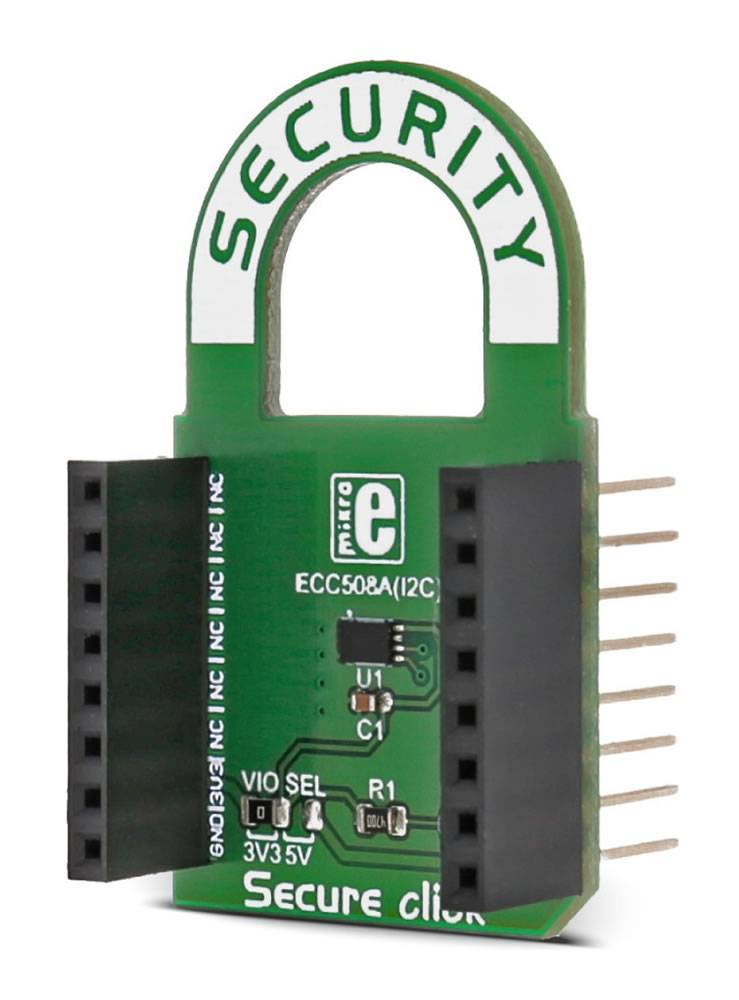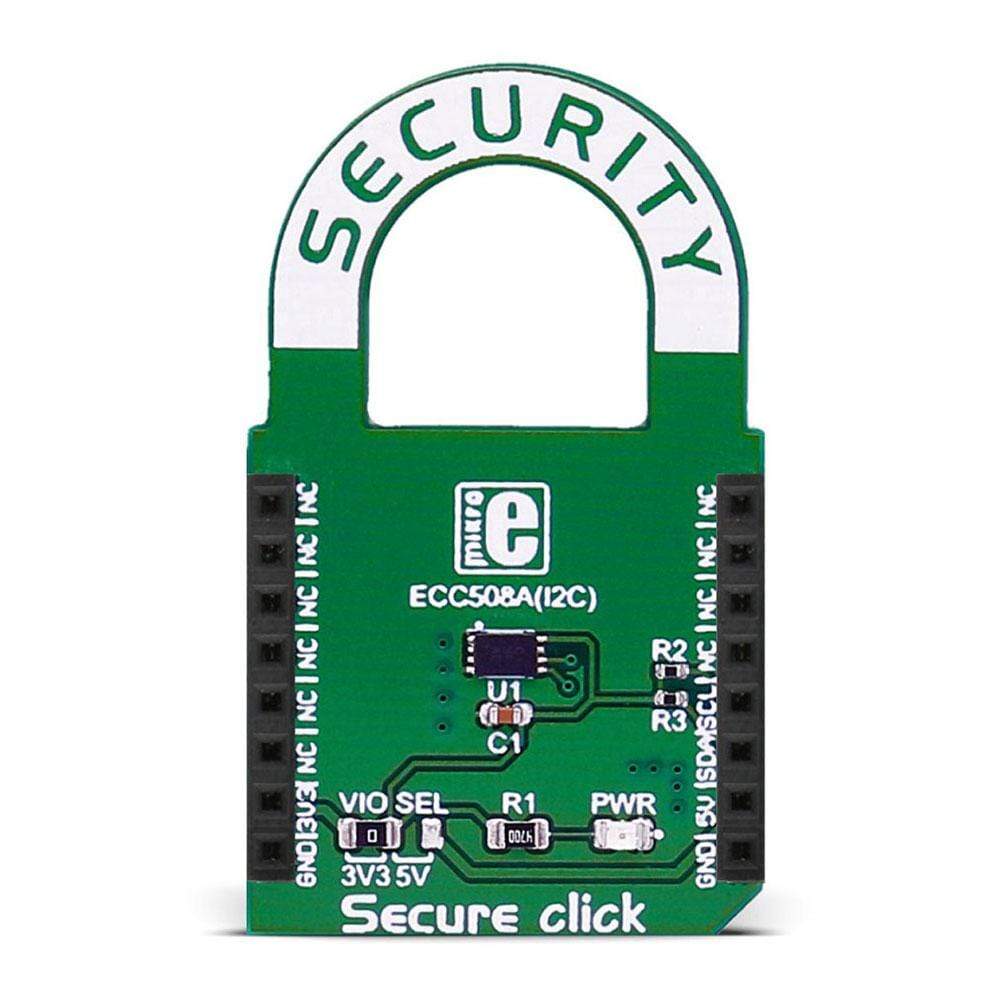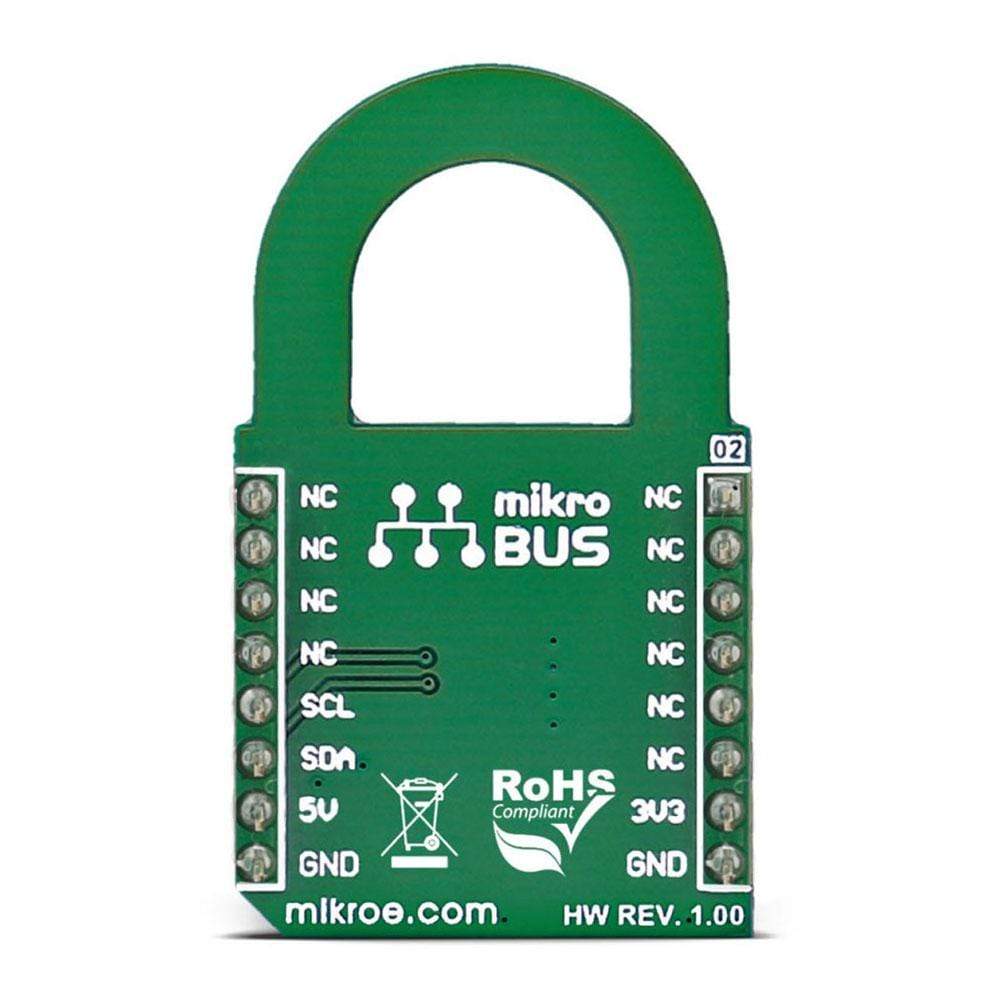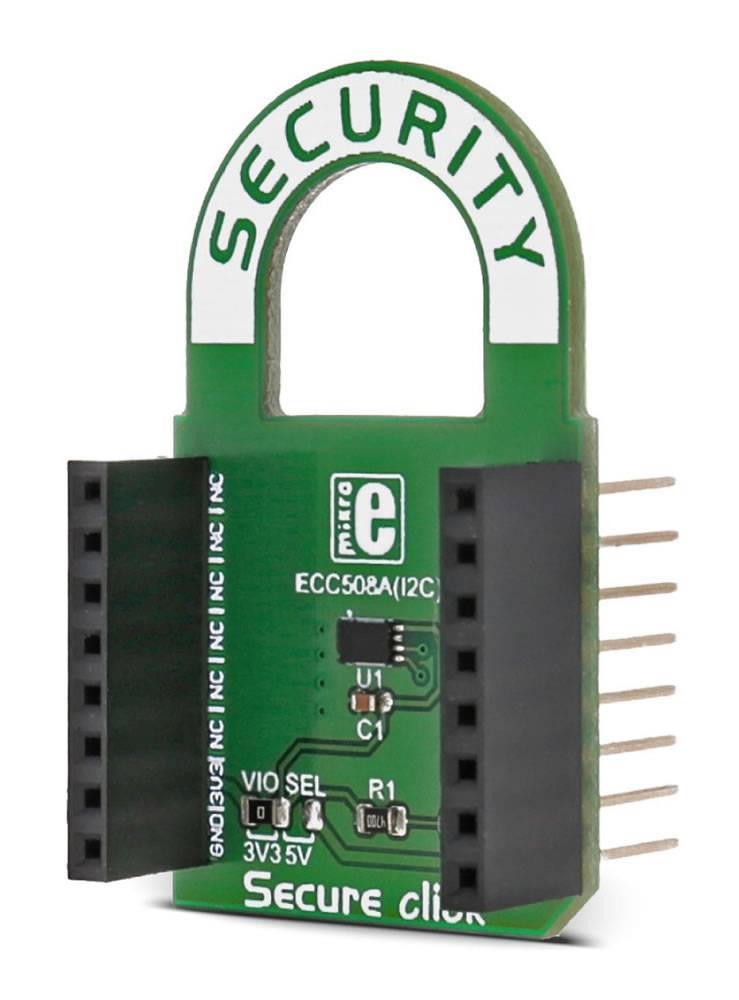
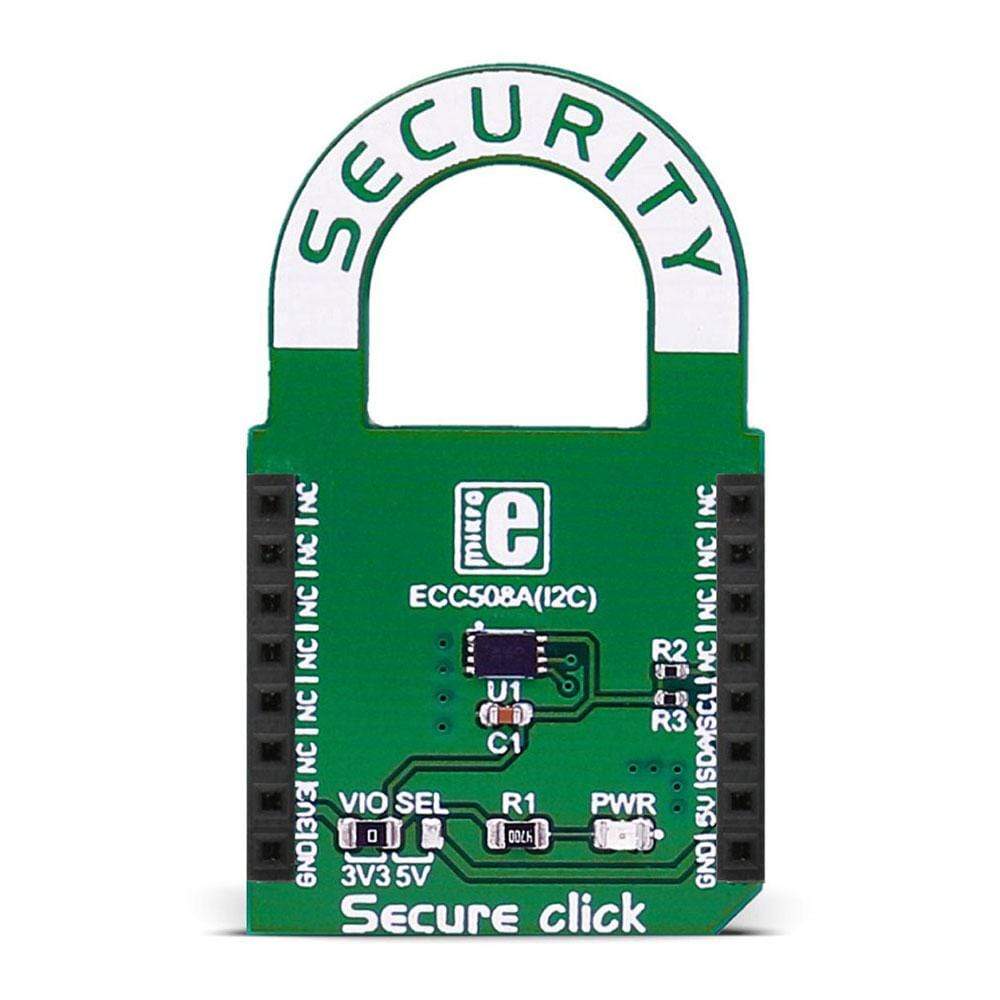
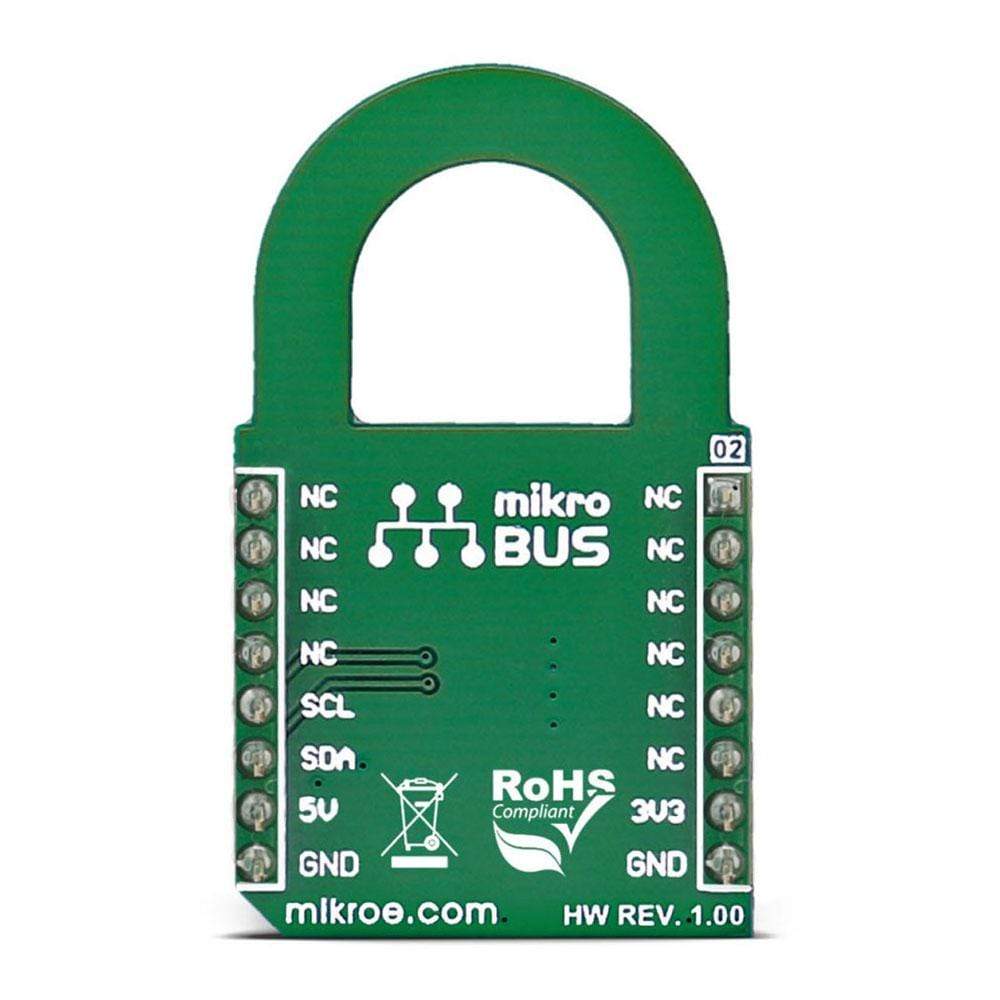
Overview
The Secure Click Board™ carries the ATECC508 Acryptographic coprocessor with secure hardware-based key storage. The Click Board™ is designed to run on either 3.3V or 5V power supply. It communicates with the target microcontroller over I2C interface.
NOTE: The Click Board™ comes with stacking headers which allow you to combine it with other Click Boards™ more easily by using just one MikroBUS socket.
Downloads
Das Secure Click Board™ enthält den kryptografischen Coprozessor ATECC508 mit sicherem hardwarebasierten Schlüsselspeicher. Das Click Board™ ist für den Betrieb mit 3,3 V oder 5 V Stromversorgung ausgelegt. Es kommuniziert mit dem Zielmikrocontroller über die I2C-Schnittstelle.
HINWEIS: Das Click Board™ wird mit Stapelstiftleisten geliefert, die Ihnen eine einfachere Kombination mit anderen Click Boards™ durch die Verwendung nur einer MikroBUS-Buchse ermöglichen.
| General Information | |
|---|---|
Part Number (SKU) |
MIKROE-2522
|
Manufacturer |
|
| Physical and Mechanical | |
Weight |
0.02 kg
|
| Other | |
Country of Origin |
|
HS Code Customs Tariff code
|
|
EAN |
8606018711222
|
Warranty |
|
Frequently Asked Questions
Have a Question?
Be the first to ask a question about this.

